
- English
- ePUB (mobile friendly)
- Available on iOS & Android
Clinical Cases in Periodontics
About This Book
Wiley-Blackwell's "Clinical Cases" series is designed to recognize the centrality of clinical cases to the profession by providing actual cases with an academic backbone. Clinical Cases in Periodontics describes the core principles of periodontics and demonstrates their practical, every-day application through a range of representative cases building from the simple to the complex and from the common to the rare. This unique approach supports the new trend in case-based and problem-based learning, thoroughly covering topics ranging from infant oral health to complex pulp therapy. Highly illustrated in full color, Clinical Cases in Periodontics utilizes a format that fosters independent learning and prepares the reader for case-based examinations.
The book presents actual clinical cases, accompanied by academic commentary, that question and educate the reader about essential topics in periodontics. The book begins with a set of cases illustrating the most common diagnoses and the key decisions and evaluations leading up to them. Subsequent chapters continue in this style, presenting exemplary cases as the basis of discussing various treatment options including surgical and non-surgical treatment, regenerative therapy, mucogingival therapy, and interdisciplinary treatments. Concluding chapters cover implant site development and general prevention of such periodontal diseases.
Clinical Cases in Periodontics 's case-based format is particularly useful for pre-doctoral dental students, post-graduate residents and practitioners, both as a textbook from which to learn about the challenging and absorbing nature of periodontology, and also as a reference tool to help with treatment planning when complex cases present in the dental office.
Frequently asked questions
Information
Examination and Documentation
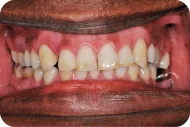

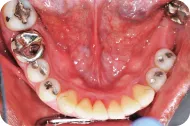
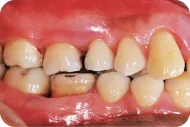
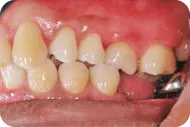
- The patient’s chief complaint
- Medical and dental history
- Soft tissue and gingival examination
- Periodontal charting
- Radiographic interpretation and diagnosis of periodontal condition
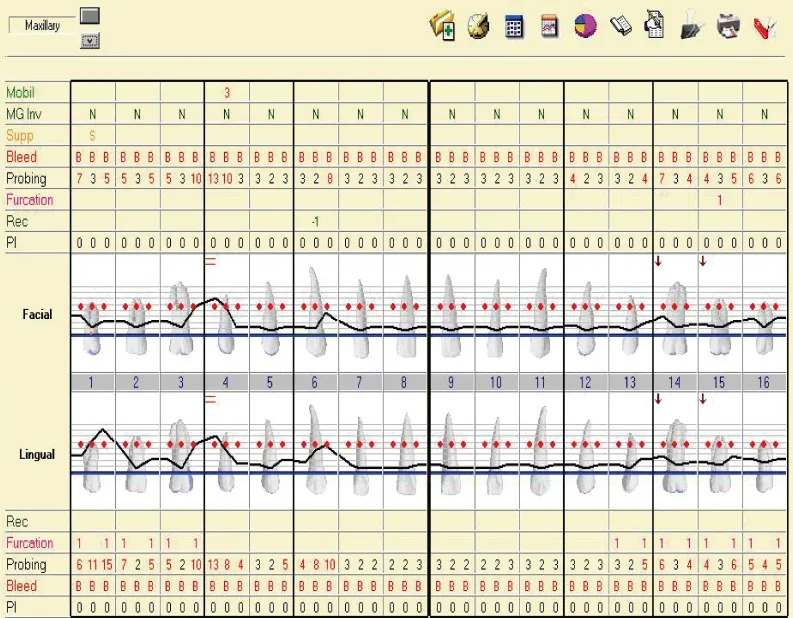
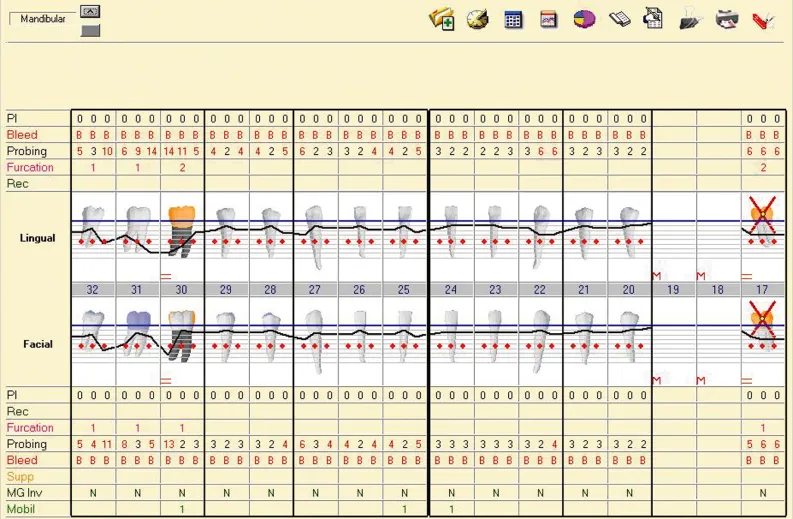
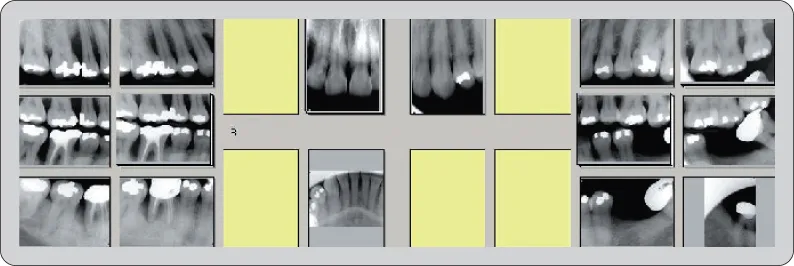
- No attachment loss
- Bleeding may or may not be present
- Pseudopockets may be present
- Only the gingival tissues have been affected by the inflammatory process
- No radiographic evidence of bone loss
- The crestal lamina dura is present
- The alveolar bone level is within 1–2 mm of the CEJ area
- Bleeding on probing may be present in the active phase
- Pocket depths or attachment loss of 3–4 mm
- Localized areas of recession
- Possible class I furcation invasion areas
- Horizontal type of bone loss is most common
- Slight loss of the interdental septum
- Alveolar bone level is 3–4 mm from the CEJ area
- Pocket depths or attachment loss of 4–6 mm
- Bleeding on probing
- Grade I and/or grade II furcation invasion areas
- Tooth mobility of class I
- Horizontal or vertical bone loss may be present
- Alveolar bone level is 4–6 mm from the CEJ area
- Radiographic furcations of grade I and/or grade II
- Crown to root ratio is 1 : 1 (loss of a third of supporting alveolar bone)
- Bleeding on probing
- Pocket depths or attachment loss >6 mm
- Grade II, grade III furcation invasion areas
- Mobility of class II or class III
- Horizontal and vertical bone loss
- Alveolar bone level is ≥6 mm from the CEJ area
- Radiographic furcations
- Crown to root ratio is ≥2 : 1 (loss of more than a third of the supporting alveolar bone)
Table of contents
- Cover
- Title page
- Copyright page
- DEDICATION
- CONTRIBUTORS
- 1 Examination and Diagnosis
- 2 Nonsurgical Periodontal Therapy
- 3 Resective Periodontal Therapy
- 4 Regenerative Therapy
- 5 Mucogingival Therapy
- 6 Interdisciplinary Treatment
- 7 Implant Site Preparation
- 8 Dental Implants
- 9 Preventive Periodontal Therapy
- Index
- Eula